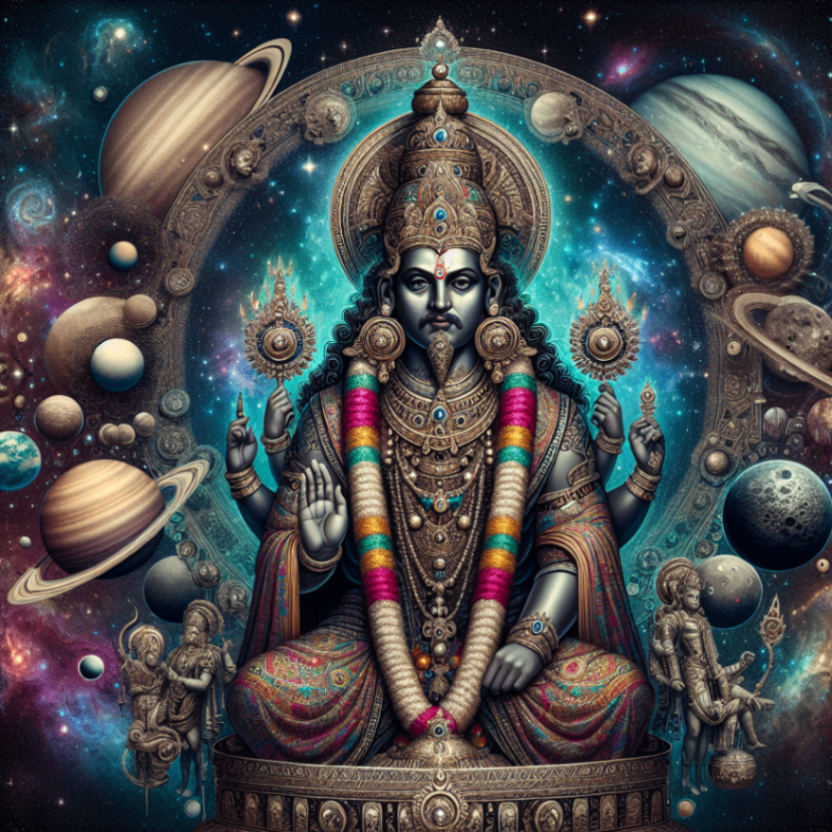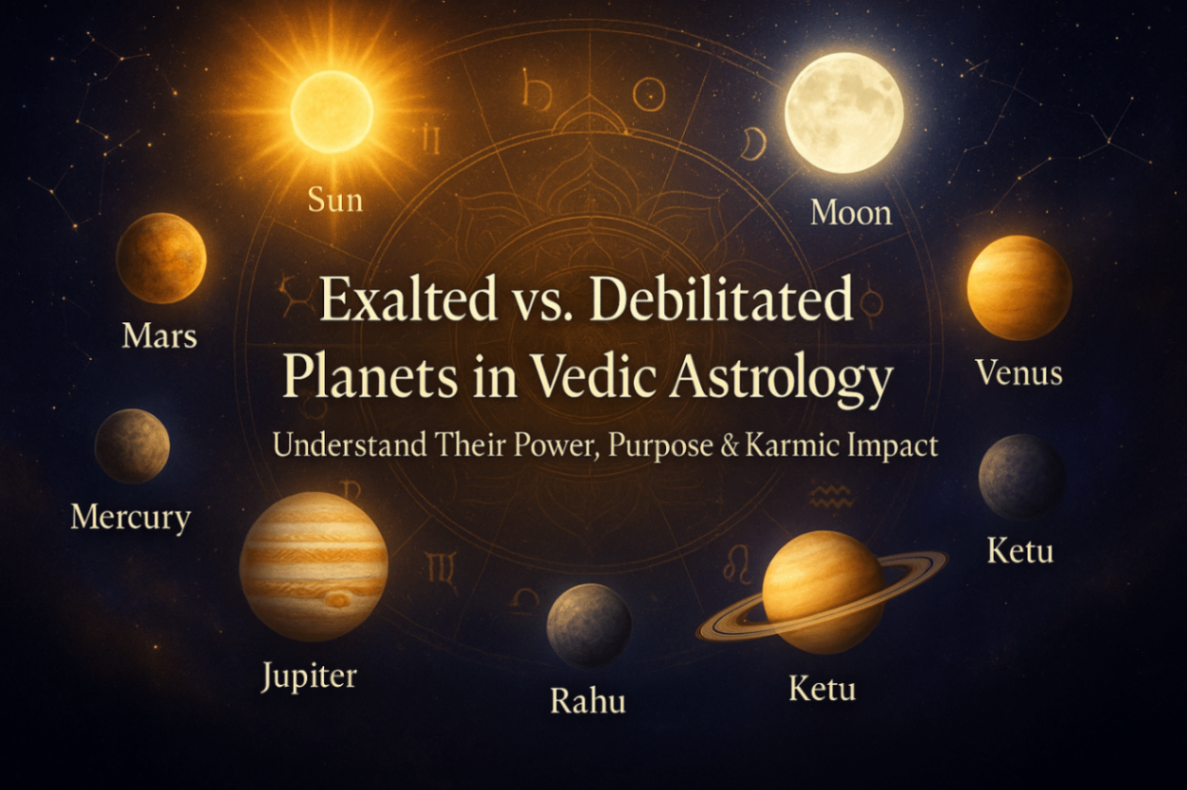Introduction
In Vedic astrology, Saturn (Shani) is considered one of the most powerful and influential planets, known for its impact on human lives through its various phases, notably Sade Sati, Dhaiya, and Mahadasha. Each of these periods brings about significant changes, challenges, and learning experiences. Here, we explore the astrological rules, effects, remedies, and mythological stories associated with these phases to help navigate their complexities.
Shani Sade Sati: The Seven and a Half Year Phase of Saturn
Astrological Significance
Sade Sati is a period of approximately 7.5 years that occurs when Saturn transits through the 12th, 1st, and 2nd houses from the natal Moon in ones astrological chart. It is divided into three phases:
Rising Phase (2.5 years): When Saturn is in the 12th house from the Moon, it signifies challenges that prepare the individual for upcoming changes, affecting mental peace and financial stability.
Peak Phase (2.5 years): As Saturn moves over the Moon (1st house), it impacts personal life and health, often testing endurance and resilience.
Setting Phase (2.5 years): Transitioning through the 2nd house, it affects wealth and speech, teaching lessons on managing resources and relationships.
Sade Sati meaning can vary based on Saturns placement in specific constellations (Nakshatras) and its relationship with other planets in the birth chart.
Shani Sade Sati Phase Specific Effects
Rising Phase: The impact is generally on mental states and foreign connections.
Peak Phase: Directly affects the body, personal life, and immediate environment. This phase is often considered the most challenging, answering the question, which phase of Sade Sati is worse?
Setting Phase: Focus shifts towards wealth, family, and speech.
During Sade Sati, Saturn’s third, seventh, and tenth aspects can activate other areas of life, based on which houses it aspects from the Moon. For example, if Saturn aspects the 10th house from the Moon, it can affect one’s career and public life.
Mythological Context

The impact of Sade Sati is illustrated through the tale of King Vikramaditya, who experienced extreme highs and lows during his Sade Sati, demonstrating that even the most powerful can be humbled and taught hard lessons by Saturn.
Remedies

Regular chanting of the Hanuman Chalisa or the Shani Chalisa to appease Saturn.
Wearing a blue sapphire or an iron ring on the middle finger after consulting a competent astrologer can mitigate the harsh effects.
Offering sesame oil, black lentils, and iron objects to Shani temples on Saturdays can reduce negativity.
What Happens When Sade Sati Ends
When Sade Sati ends, individuals often feel a sense of relief and freedom from the intense pressures and challenges they faced. The lessons learned during this period, however, stay with them, promoting personal growth and resilience.
Dhaiya: The Small Pan of Saturn
Astrological Significance
Dhaiya, also known as Small Panoti, refers to the transit of Saturn over the 4th or 8th house from the natal Moon, lasting for approximately 2.5 years. This period is known for creating conditions of mental stress and domestic issues.
4th House Impact: The transit of Saturn in the 4th house (Ardhastama Shani) generally impacts domestic peace and mother’s health.
8th House Impact: The transit of Saturn in the 8th house (Ashtama Shani) can bring about challenges related to longevity, accidents, and unexpected losses.
Relief Measures
Participation in spiritual rituals like Saturn’s tail Puja or performing Rudrabhishek can alleviate the harsher impacts.
Remedies

Recitation of Shani Mantras such as Om Shani Devay Namah 108 times daily.
Donations of mustard oil, black sesame seeds, and black clothes to the needy, especially on Saturday.
Feeding crows and helping the disabled can also appease Saturn.
Mahadasha: Saturns Major Period
Astrological Significance
Saturn Mahadasha lasts for 19 years and can bring profound changes depending on Saturn’s position and aspects in the horoscope. This period tests an individuals patience and perseverance through various challenges.
Mythological Context
The story of King Harishchandra, known for his truthfulness and integrity, illustrates the trials one might face under Saturns influence. Despite severe tests, his steadfast nature eventually led to divine blessings, symbolizing the ultimate rewards of integrity and patience.
Sub-periods (Antardasha)
During Saturn’s Mahadasha, the Antardashas of different planets will bring varied results, which must be analyzed for a holistic prediction.
Saturns Strength
The effects during the Mahadasha also depend on whether Saturn is exalted, debilitated, in its own sign, or in an enemy sign in the birth chart.
House Lordship
Saturn’s role as a lord of particular houses in a chart (for example, being a lord of Kendra or Trikona houses) plays a crucial role in determining the nature of its Dasha period.
Incorporating Remedies
Spiritual Practices: Regular meditation and spiritual practices during these periods can provide the mental strength to handle the challenges posed by Saturn.
Social Service: Engaging in service to the underprivileged and elderly, as Saturn is also the planet of karma and service.
Performing Shani Shanti Puja and Navagraha Shanti Puja at the beginning of the Mahadasha.
Wearing dark blue or black clothes on Saturday.
Helping the elderly and the poor, and providing services to physically challenged individuals.
Conclusion
Saturn, while often feared for its stringent tests and challenges, is also the great teacher of the zodiac. Through Sade Sati, Dhaiya, and Mahadasha, Saturn teaches the value of hard work, discipline, and ethical conduct. By understanding these astrological phases and following the recommended remedies, individuals can mitigate negative effects and harness the lessons to foster growth and spiritual advancement. Thus, Saturn’s periods, though challenging, are ultimately transformative, steering one towards the path of righteousness and self-improvement.





































